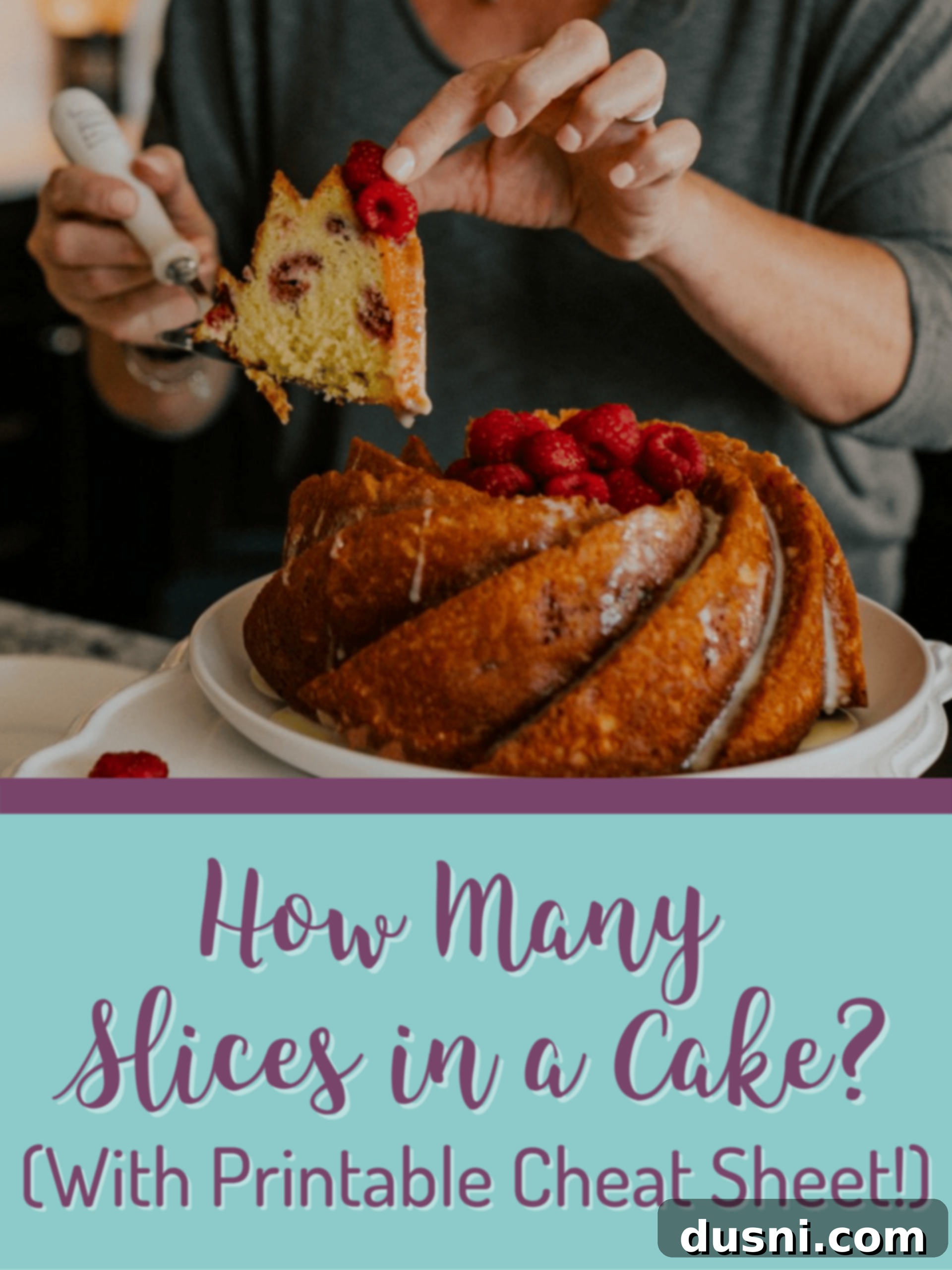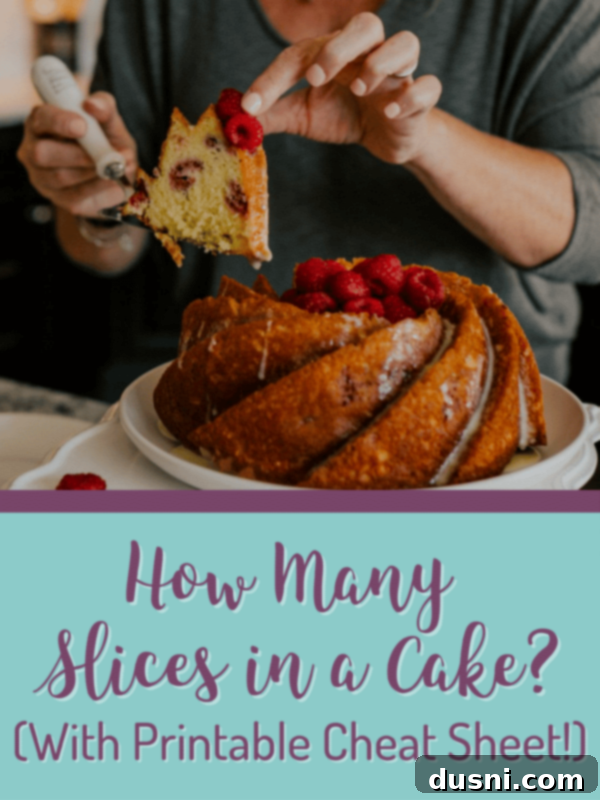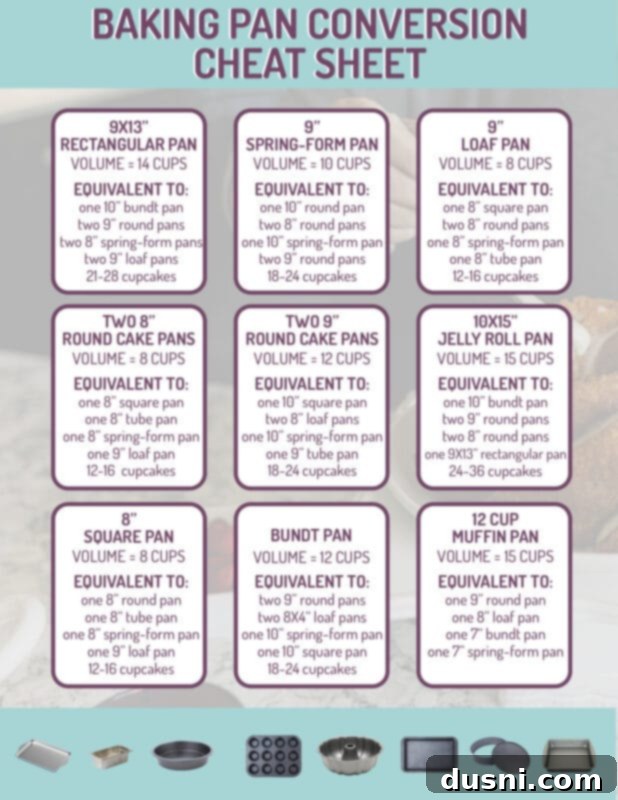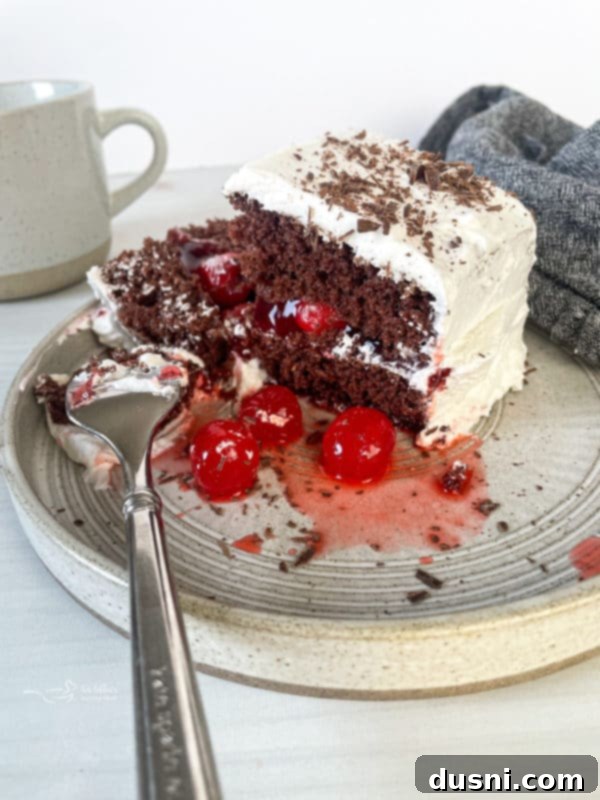How Many Slices in a Cake? Your Ultimate Guide to Perfect Portions and Effortless Cutting
The question of “how many slices in a cake?” often arises at the most inconvenient moment: when you’re standing with a knife in hand, a crowd of eager guests, and the daunting task of dividing a delicious cake into equitable portions. It’s a common culinary conundrum, whether you’re serving a small family gathering or a large celebration. The pressure to ensure everyone gets a slice – and that those slices are fair, neither too small nor ridiculously oversized – can be surprisingly high. Imagine the scenario: some guests discreetly eye the largest piece, while others politely request a smaller portion, perhaps secretly hoping for a generous helping.
This is precisely when having a clear strategy for cake cutting becomes invaluable. Instead of relying on guesswork and improvisation, a well-planned approach ensures every guest leaves happy and satisfied. To remove any uncertainty from the equation, this comprehensive guide will walk you through the art of cake slicing, offering practical tips and a fantastic printable reference to make you a cake-cutting pro in no time.
The Art of Cake Portioning: Why Even Slices Matter
Beyond simply satisfying hunger, cutting a cake into uniform slices offers several benefits. Firstly, it ensures fairness; no one feels shortchanged with a tiny crumb while another receives a behemoth slice. This contributes to a harmonious serving experience, especially at larger events. Secondly, evenly cut slices present beautifully, elevating the overall aesthetic of your dessert table. A neatly portioned cake looks professional and inviting. Thirdly, it helps manage expectations and prevent waste. When you know roughly how many servings your cake yields, you can better plan for your guest count and avoid having too much or too little.
I recall the anxiety of watching my aunts expertly, yet sometimes haphazardly, tackle wedding cakes in my younger days. When my nieces and nephews started getting married, the thought of being tasked with cutting a multi-tiered wedding cake filled me with dread! The responsibility of ensuring every guest received a perfectly sized piece of such a significant cake was truly daunting. Thankfully, I was usually assigned other roles, much to my relief!
Mastering Cake Cutting for Different Shapes and Sizes
The first step in any cake-cutting endeavor is to consider the cake’s shape and size. Whether you’re faced with a classic round, a versatile square, or a grand rectangular sheet cake, distinct strategies will help you achieve reasonably even-sized slices. Remember, consistency is key to a beautiful presentation and satisfied guests.
Cutting Round Cakes
Round cakes are perhaps the most common and can be surprisingly tricky to cut evenly. The traditional wedge method works well for smaller cakes, but for larger ones, it can result in very wide outer slices and tiny inner ones. Here’s how to approach different sizes:
- Small Round Cakes (6-8 inches): For a 6-inch cake, a simple approach is to make one cut across the middle, then two more cuts to divide each half into thirds. This yields 6 relatively even slices. For an 8-inch cake, you might aim for 8-10 slices using similar radial cuts, ensuring the angle for each wedge is consistent.
- Medium Round Cakes (9-10 inches): To get 10-14 even slices, you can start by making two parallel cuts about 2 inches apart through the center of the cake, creating a rectangular strip. Then, slice this strip into individual portions. Rotate the cake slightly and repeat the process on either side of the center rectangle, cutting another parallel strip and then slicing it. The remaining curved ends can then be cut into smaller wedges. This method helps maximize even portions.
- Large Round Cakes (12 inches and up, especially for events like weddings): For larger cakes, often served at weddings or big parties, the “grid” or “concentric circle” method is highly recommended by professionals. Begin by cutting a small concentric circle about 2 inches in from the outer edge. Then, slice the outer ring into small, uniform rectangular portions. Once the outer ring is served, repeat the process by cutting another concentric circle and slicing that ring. Continue until only the center remains, which can then be cut into wedges. This method allows for many consistent servings and is ideal for maintaining structural integrity, especially for layered cakes. For a 12-inch cake, you could easily get 20-30 generous servings this way.
Cutting Square and Rectangular Cakes (Sheet Cakes)
These shapes are generally the easiest to cut evenly, as their straight edges lend themselves perfectly to a grid pattern. Whether it’s a 9×13-inch pan or a large sheet cake, the principle is the same:
- Standard Grid Method: First, make evenly spaced parallel cuts along the longer side of the cake. Then, make perpendicular cuts across the shorter side, creating a neat grid of square or rectangular portions. For a 9×13-inch cake, you might make 3 cuts lengthwise and 4 cuts widthwise to yield 20 standard slices. For smaller portions, simply increase the number of cuts, making each grid section smaller.
- Serving Sizes: A 9×13-inch cake typically yields 12-24 slices, depending on how large you want the portions to be. Larger sheet cakes (e.g., 18×24 inches) can serve 50-100+ people and benefit greatly from precise grid cutting to avoid serving chaos.
Cutting Bundt Cakes
Bundt cakes, with their distinctive fluted designs, are usually cut into simple wedges. The central hole makes it straightforward to slice radially from the inner edge to the outer edge. Aim for even spacing between cuts to create uniform slices that showcase the cake’s unique shape.
Essential Tips for Achieving Flawless Cake Slices
Getting perfect cake slices isn’t just about the cutting pattern; it also depends on the cake’s type, temperature, and the tools you use. Is it a delicate angel food cake, a dense cheesecake, a heavily frosted layer cake, or a simple naked cake?
- Choose the Right Knife or Cake Cutter: The tool makes a significant difference. A long, thin, sharp chef’s knife or a specialized cake knife is best for cakes with frosting, allowing for clean cuts without dragging the frosting. For unfrosted cakes, like angel food cakes or some coffee cakes, a serrated knife (like a tomato knife or bread knife) works wonderfully, cutting through the delicate crumb without squishing it. For cheesecakes, a sharp, thin non-serrated knife is usually preferred.
- Optimal Cake Temperature: Most cakes are easiest to cut at room temperature, as they are softer and less prone to crumbling or cracking. However, very dense cakes, cheesecakes, or cakes with delicate fillings (like mousse or whipped cream) might benefit from being slightly chilled (not frozen) before cutting. This firms up the structure, allowing for cleaner lines.
- Measure and Score Your Cuts First: Before making any deep cuts, lightly score the top of the cake. Use a ruler or a visual guide to mark where each slice will be. This preliminary scoring acts as a guideline, helping you make precise and even full cuts. Avoid pressing too hard; just enough to create a visible line.
- Be Gentle and Patient: There’s no need to rush or hack at the cake. A smooth, firm stroke is usually all it takes. For softer cakes, a gentle sawing motion with a serrated knife can prevent tearing. Cut slowly and deliberately to avoid pulling away chunks of cake, ensuring clean and consistent-looking slices every time.
- Heat the Blade for Dense Cakes: For challenging, dense cakes like rich chocolate ganache cakes, cheesecakes, or heavily butter-based pound cakes, a warm knife makes a world of difference. Run your knife under hot water for about a minute, then quickly dry it with a paper towel. The warmed blade will glide through the cake’s rich texture, creating perfectly smooth cuts. Repeat this warming process between each cut if necessary.
- Resist the Urge to Cut with a Server: While some cake serving spatulas have a serrated edge designed for cutting, a dedicated, sharp knife generally performs much better for the initial cuts. Use the server for lifting and transferring the slice, not for the primary cutting action.
- Clean Your Knife Between Cuts: This is a crucial step, especially for frosted cakes. Frosting build-up on the knife will drag through subsequent slices, creating messy edges and potentially uneven distribution of frosting. Keep a damp cloth or paper towel handy to wipe the blade clean after each slice. This keeps your presentation tidy and ensures everyone gets a fair share of that delicious frosting – we all know how contentious that can be!
- Use Cake Boards for Stability: For large or multi-layered cakes, having a sturdy cake board underneath is essential. It provides a stable base for cutting and can prevent the cake from shifting or collapsing during the process.
Affiliate Link Disclosure: Some of the links you will see on An Affair from the Heart are affiliate links, meaning that, at no cost to you, I may earn a small commission if you click through and make a purchase.
Understanding Common Cake Pans and Their Impact on Slicing
The type of cake pan used plays a significant role in how a cake is baked and, consequently, how it can be best sliced. Different recipes call for specific pan sizes and shapes, and understanding these can help you visualize your cutting strategy. Perhaps it’s time to expand your bakeware collection!
- 9×13″ Pan / Rectangular Pan: These are workhorses in the kitchen, perfect for sheet cakes, brownies, and various bars. Their rectangular shape is ideal for simple, efficient grid-style slicing, yielding numerous consistent portions.
- Square Pan: Typically 8-inch or 9-inch, these are great for smaller layer cakes or bar recipes. Like rectangular pans, they lend themselves well to grid cutting, offering a good number of servings for a family or small gathering.
- Round Cake Pan: The classic choice for tiered and layer cakes, commonly found in 8-inch or 9-inch diameters. These require radial or concentric cutting techniques to ensure even slices, especially when dealing with multiple layers.
- Bundt Pan: Known for their decorative fluted designs, Bundt pans are perfect for coffee cakes and sturdy dessert cakes. Their shape naturally guides cutting into elegant wedges. They can often be used as a substitute for layer cakes or 9×13-inch cakes.
- Loaf Pan: Primarily used for pound cakes, quick breads, and fruit loaves. These yield rectangular slices that are straightforward to cut across the width of the loaf.
- Tube Pan: Essential for light and airy angel food cakes. The central tube ensures even baking and the cake is typically inverted to cool. Slicing these delicate cakes often requires a serrated knife.
- Springform Cake Pans: Indispensable for cheesecakes and tarts where the sides need to be removed without inverting the cake. Cutting cheesecakes requires a hot, clean knife for the smoothest possible slices.
- Jelly Roll Pan: These shallow rectangular pans are perfect for cake rolls and thin sheet cakes. They can be cut into small squares or rolled for a distinctive presentation.
- Muffin Tins: While not for cakes in the traditional sense, muffin tins are used for cupcakes, which are essentially pre-portioned individual cakes, eliminating any cutting dilemmas!
- Pie Plates: Used for pies and tarts. While not cakes, the cutting method often involves radial slices, similar to small round cakes. Both deep-dish and shallow varieties are available.
Other Essential Cake Cutting Tools
- Cake Boards: Incredibly handy for providing a stable base, especially for large sheet cakes, round cake layers, and multi-tiered wedding cakes. They make handling and serving much easier.
- Plastic Wrap: Essential for covering cut cake and leftovers to prevent them from drying out. Properly stored cake remains moist and delicious for longer.
- Serrated Knife: As mentioned, this is a must-have for delicate, unfrosted cakes like angel food or sponge cakes, ensuring a clean cut without compression.
- Cake Server: Once your perfect slices are made, a sturdy cake server is indispensable for neatly transferring them to plates. A good quality server can be a lovely touch, especially for special occasions like weddings.
Visit my Amazon Store for great gift ideas for the baker in your life. (even if it’s you!)
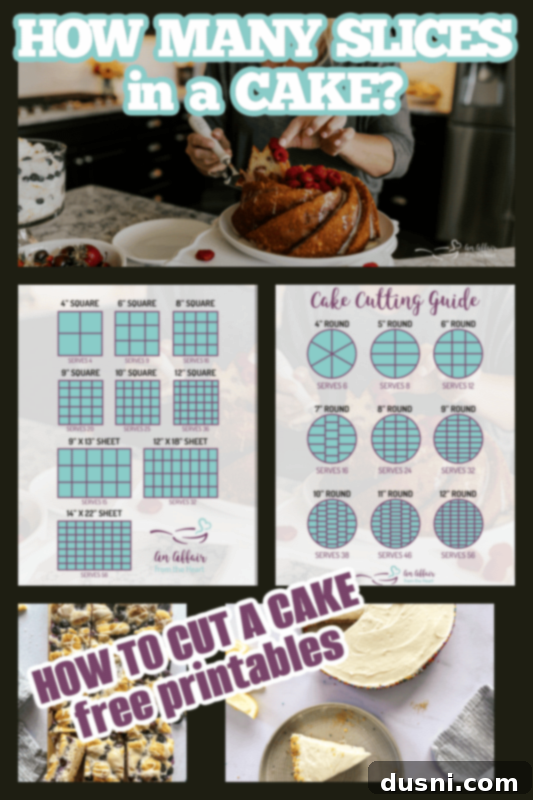
Your Go-To Resource: The Printable Cake Cutting Guide
Never again will you have to guess how many slices you can get from your cake! This handy guide is designed to take all the guesswork out of cake portioning, whether you’re aiming for petite servings or generous slices. It provides clear visual instructions and estimates for various cake shapes and sizes, ensuring you can cut any cake like a seasoned professional.
Love it? Pin it!
Ensure you remember where to find this invaluable guide on how to cut a cake! Pin it to your favorite Pinterest baking board now, so it’s always available when you need it for your next baking adventure!
Cutting Will Be a Piece of Cake with This Handy Printable Guide!
From this moment forward, you will never again have to second-guess if you have enough cake for your guests. Whether you prefer serving smaller, elegant slices or generous, hearty portions, this comprehensive cake cutting guide will empower you to cut any shape or size of cake with professional precision! I’ve made it incredibly straightforward for you to access: simply click this PDF link to download and print your free baking pan conversion chart and cake slicing reference.
Please note that these printable guides are created as a complimentary resource for my valued readers. They are copyright protected and are intended for personal use only; commercial use or resale is strictly prohibited.
Beyond Cake Cutting: More Kitchen How-To’s & Kitchen Hacks
My website features an entire section dedicated to “How-To’s,” offering a treasure trove of kitchen wisdom and practical hacks that will elevate your cooking and baking skills. Feel free to browse through these helpful resources:
- Baking Pan Conversion Cheat Sheet (pictured above)
- How to Toast Coconut
- Buttermilk Substitution
- Bisquick Substitution
- How to Make Chocolate Ganache
- Why You Should Grate Your Own Cheese
- How to Freeze and Use Ripe Bananas
Delicious Cake Recipes to Put Your New Skills To The Test
Now that you’re armed with the knowledge and tools for perfect cake slicing, are you ready to put your new skills to the test? Here are some of my all-time favorite cake recipes, perfect for practicing your precise cutting techniques and delighting your family and friends:
- Black Forest Cake (pictured above)
- Chocolate Macaroon Tunnel Cake
- The BEST German Chocolate Cake
- Bittersweet Chocolate Coffee Cake
- Fresh Apple Cake
- Popcorn Cake
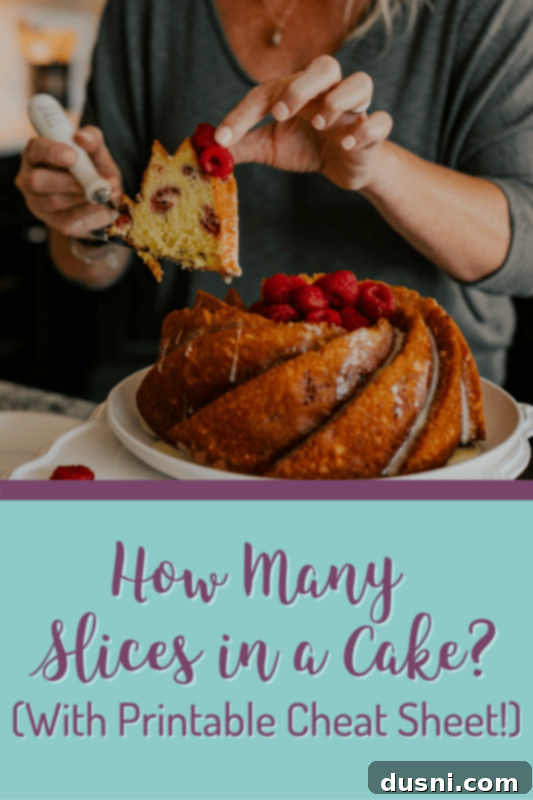
Enjoy this free cake-cutting guide and the joy of perfectly portioned desserts every time! 
